News
Summary:
The basic concepts, types and directivity of array sound columns are introduced, and four typical directional characteristics of natural directivity, omnidirectional nature, constant directivity and adjustable and controllable directivity are analyzed. The historical evolution of the array column is reviewed, and the future development trend of the array column is prospected.
1. The concept of array sound column
Array Sound Column (Sound Column) is a device that arranges one or more groups of the same speaker unit vertically in a linear and vertical manner, and is installed in a column-shaped cabinet to achieve acoustic indicators such as expected directivity and sound pressure level (some array sound columns can be attached to low-frequency speaker units), commonly known as "sound columns". A common array column is shown in Figure 1. At present, the array sound column has been widely used in performance venues, cinemas, multi-function halls, conference rooms, lecture halls, classrooms, airports, railway stations, museums, command centers, churches and other occasions.
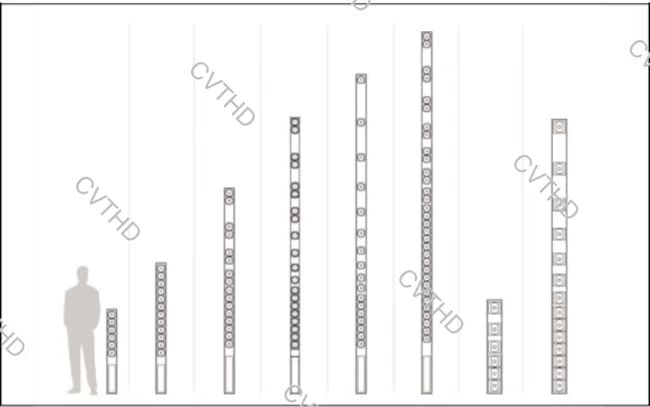
Figure 1 Schematic diagram of array sound column[1]
2. Why does the array sound column appear
A single speaker unit has an upper limit to radiated sound power due to its own power rating and distortion limitations. In order to achieve higher sound pressure levels and meet the needs of long-range acoustic radiation, a natural idea is to combine multiple identical speaker units to collectively radiate sound power in order to cover a larger area. This is very effective in low-frequency situations, which can significantly improve low-frequency radiation power, so there are early applications of speaker arrays, including cylindrical speaker arrays and two-dimensional planar distribution speaker arrays, of which columnar speaker arrays are later called "array columns".
In 1930, I of the RCA Research Laboratory Wolfe and L. Malter published a paper in the American Journal of Acoustics Directional Radiation of Sound, which studied and analyzed the pointing characteristics of point sources, line sources, curve sources, and plane sources [2], and gave the corresponding theoretical formulas and experimental results of various sound sources.
It has been found that in addition to improving the radiated sound power, the array sound column can also make the radiated sound wave have strong directivity, which makes the array column can be used to improve the language intelligibility in a high reverberation environment. However, if the array column is not properly controlled (e.g. the signal input to each speaker unit is not properly set for the application, the speaker unit is not properly spaced), the speaker units in the array column will negatively interfere with each other.
1 9 5 7 years, RCA Research Laboratory H . F . O l s o n Acoustical Engineering comprehensively analyzes an array of sound columns composed of multiple identical point sound sources arranged in straight lines, and gives a theoretical model and pointing characteristics [3]. The horizontal directivity of the array column is the same as that of a single speaker unit, and in the vertical plane, that is, the directivity in the vertical direction increases with increasing frequency, that is, the main lobe becomes narrower and narrower, and gradually the side lobes appear and more and more. In 1963, Klepper of Newman and Steele of the Massachusetts Institute of Technology proposed the "Barber" spiral array column [4], which shortens the effective length of the array column at high frequencies by rotating the arranged speaker unit to optimize the vertical directivity of the array column, as shown in Figure 2.
In the sixties and seventies of the twentieth century, array column products began to be popular, until now.
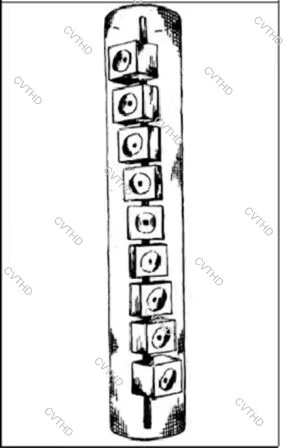
Figure 2 "Barber" spiral array sound column[4]
3. Types of array columns
According to different evaluation indicators, the array sound column has different classifications to meet different use needs, such as the position of the audience area, the position of the speaker, the orientation of the harmful reflective surface, etc. The following classifies the array columns from the characteristics such as geometry, frequency band phase amplitude of the speaker unit, power amplifier and directivity.
1)According to the shape of the speaker unit, the array column can be divided into straight line, curve, zigzag, spiral, stepped, etc
2) According to the frequency band of the speaker unit, the speaker unit of the array sound column can be a group of all the same full-range speaker units, or it can be combined by a group of the same mid-woofer unit and one or a group of the same low-frequency speaker units to form a two-way system, or it can be combined by a group of the same tweeter unit, a group of the same mid-range speaker unit and one or a group of the same low-frequency speaker unit to form a three-way system.
3) According to the phase characteristics of the speaker unit, the array sound column can be divided into the array sound column with the same speaker unit connected in the same phase and the array sound column in which the phase of each speaker unit can be adjusted independently.
4) According to the signal amplitude characteristics of the input speaker unit, the array sound column can be divided into an array column that enters the same speaker unit with the same amplitude driving signal and an array sound column that enters the same speaker unit whose driving signal amplitude changes according to a certain law.
5) According to the placement of the power amplifier, the array column can be divided into passive array column and active array column. The passive array column is an array column that is external to the power amplifier, and the electrical signal is first transmitted to the power amplifier and then input to the passive array column. The active array column is an array column built into the power amplifier, and the electrical signal can be directly transmitted to the active array column.
6) According to the directional characteristics of the array column, the array column can be divided into two categories: fixed directivity array column and adjustable controllable directivity. There are three main types of array columns with fixed directivity: natural directivity, omnidirectional and constant directivity. Array columns with adjustable and controllable directivity can be divided into array columns with mechanical (physical structure) regulation directivity and array columns with electronically adjustable directivity. In the electronically controlled directivity array column, digital signal processing technology is used to adjust the beam direction and beam width of sound wave radiation, and the vertically installed and constant directivity active array column is called digital beam array of points (DAP).
4. Fixed directivity array sound column
4.1 Natural Directional Array Column,
The natural directivity array column does not have weight control for each identical speaker unit, and multiple identical speaker units radiate sound waves to produce natural directivity. For the linear array columns arranged equidistant by the speaker unit, its vertical directivity is a function of frequency, the higher the frequency, the narrower the main lobe, and the stronger and more complex the side lobe.
4.2 Omnidirectional array columns
The omnidirectional array column weights each identical speaker unit, giving the array column an omnidirectional characteristic. The vertical directivity of the array column is the same as that of a single speaker unit. Omnidirectional array columns include: Bessel type, sinc type, quadratic residual sequence type, etc.
In 1983, Philips introduced the concept of a Bessel function array at the 73rd European AES Conference [5]. The circuit control diagram is shown in Figure 3.
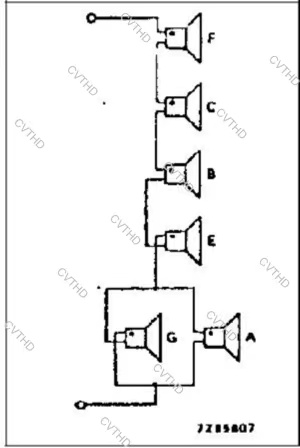
Figure 3 Bessel function array sound column circuit control diagram[5]
In 1990, D. Smith, DBK Associates, Inc. B. Keele Jr. proposed that the source intensity is distributed according to the Bessel function to set the sound pressure radiation intensity of each speaker unit, so as to improve the uniform characteristics of the radiation sound field of the array sound column [6].
In 2004, Jiang Chao and Shen Yong of Nanjing University proposed that the source strength set the sound pressure radiation intensity of each speaker unit according to the sinc function distribution, so as to improve the phase characteristics while improving the uniformity of the sound field [7].
In 2009, Shen Yong and Jiang Chao of Nanjing University obtained the patent authorization for "Method and device for setting up speaker array using secondary residual sequence". The patent adjusts the signal delay and phase size of each speaker unit according to the proportional relationship of the quadratic residual sequence to improve the uniformity of the sound field, so that the uniformity of the array column pointing is significantly improved [8].
4.3 Constant Directional Array Sound Column
A constant directivity array column is an array column in which the vertical directivity of the array column does not change with frequency in a wide frequency band. At present, there is no unified regulation of "wide band", generally at least 1~2 octaves in the intermediate frequency region (such as 1?2 kHz, 1?4 kHz). There is currently no uniform provision for "directivity does not change with frequency", which can be simplified to: within the specified frequency range ("wide band"), 1) the coverage angle (main lobe beam width) does not change to a certain limit; 2) The difference between the amplitude of the main lobe and the amplitude of the largest side lobe is greater than a certain limit (e.g., 10 dB).
In 1963, Klepper of Newman proposed the concept of array column constancy [4].
In 1996, Menno van der Wal et al. of the Seismic and Acoustic Laboratory of Delft University of Technology proposed to achieve constant directivity by combining the element weights of the rising cosine function and the logarithmic speaker unit spacing [9].
In 2000, D. Smith, DBK Associates, B. Keele Jr. proposed an arc-shaped speaker array called CBT (Constant-Beamwidth Transducer) [10], as shown in Figure 4, the surface sound velocity of the array satisfies the Legendre function distribution, the directivity above the cutoff frequency and the beamwidth are constant, and the change with distance is almost constant.
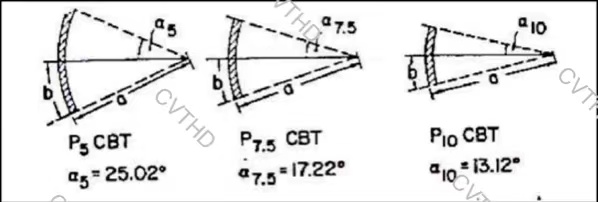
Fig.4. Schematic diagram of arc-shaped CBT array sound bars of different orders and angles[10]
In 2002, DBK Associates B. Keele Jr. used the delay technique to propose a delayed linear CBT array column [11], as shown in Figure 5.
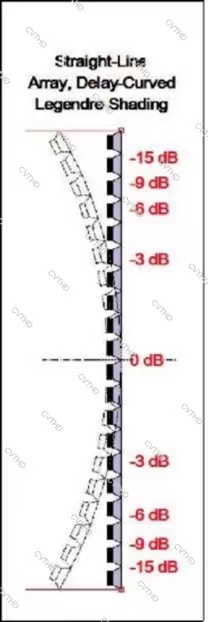
Fig.5. Schematic diagram of time-delay linear CBT array sound column[12]
In 2015, Feng Xuelei, Shen Yong and others of Nanjing University proposed multiple constant directivity arrays, that is, Multi-CBT arrays, that can achieve arbitrary directivity according to the characteristics of constant directivity arrays. It can realize the use of frequency-independent element weights to achieve arbitrary directivity, and the directivity does not change with frequency in a wide frequency range [13]. Multi-CBT arrays can be used in large viewing spaces, with specific directivity for the spatial layout, enabling a consistent auditory experience in different positions within the auditorium.
5. Adjustable and controllable directivity array sound column
5.1 Definitions
The adjustable and controllable directivity array column is an array column with adjustable and controllable directivity in the vertical direction of the array column in a wide frequency band. Its vertical directivity is described by technical indicators such as vertical deflection angle and vertical coverage angle. Adjustable and controllable polar pattern array columns include array columns whose main lobes cannot be deflected but whose vertical coverage angle can be adjusted, and array columns whose main lobes can be deflected and whose vertical coverage angle can be adjusted while the deflection angle can be adjusted. The adjustable and controllable directivity array sound column adopts mechanical methods, or electronic methods such as wave field synthesis, sound pressure matching, modal matching, sound contrast control, etc., to control the filter coefficient or speaker unit weight of each speaker unit channel, and achieve specific vertical directivity or sound field control goals in a wide frequency band. Among them, there is no unified provision for "wide band", generally at least 1~2 octaves in the intermediate frequency region; "Specific vertical directivity or sound field control targets" are not uniformly defined, and are generally determined according to the needs of the application scenario.
Broadly understood, the adjustable and controllable directivity array column can achieve various directional characteristics, including: natural directivity, omnidirectionality, constant directivity and desired directivity.
5.2 Mechanical control of directional array sound columns
The most primitive mechanical adjustment of the directional array column is to make the array column tilt by mechanically adjusting the pitch angle of the array column, and its main axis points to the listener area. But this method is ugly in appearance and very incongruous with the decorative environment.
Bose has produced a mechanically adjustable polar pattern array column that does not have to be tilted, and the front baffle can be manually angled to achieve vertical directivity. The product provides four directional modes, namely straight line mode, inverted J mode, J mode and C mode, as shown in Figure 6, different modes have different applicable scenarios, and can be adjusted according to different stage and audience positions.
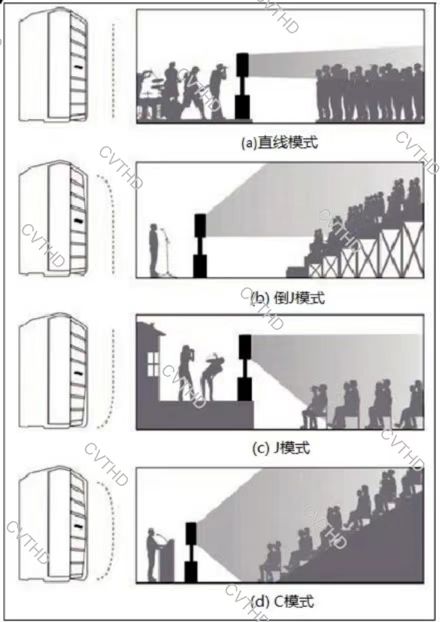
Fig.6 Schematic diagram of four mechanical regulation directivity[14]
5.3 Electronically modulated directional array columns
In 1994, van der Werff [15] of Peutz & Associes proposed that the vertical coverage angle can be controlled by the length of the array column, the source density can control the sidelobe, the source size can control the horizontal beam width, and two lobes can be obtained by using frequency-dependent element weights and delays to achieve frequency-independent coverage angles and acceptable sidelobes, improve the ratio of direct sound to reverberation sound (3~5 dB), and improve speech intelligibility.
In 1994, de Veries et al. [16] of Duran Audio proposed a digital control unit (DCA) for equidistant linear arrays, which uses DSP technology to control the amplitude and phase of each speaker unit, achieving frequency-independent directivity and controllable beamwidth. de Veries et al. analyzed the basic structure and requirements of DCA, which consists of a backplane, a power supply, an input module delay control unit and an output channel, which needs to meet certain frequency domain bandwidth and time domain resolution conditions, and the filter needs to have a relatively constant group delay.
In 2001, E.W. of Duran Audio Start. and G.W.J. van Beuningen [17] introduced digital polar synthesis, using the concept of log-pitch arrays, which uses finite-length impulse response filters to beam-control the speaker array, the core of which is to solve the additional filters of each speaker unit using an optimization algorithm for the target sound field.
In 2021,Guangzhou Xinyuan Audio Technology Co., Ltd proposed the concept of digital beam dot matrix , and built a low-latency digital signal processing module, power amplifier, and one or more sets of speaker units into a vertically installed columnar cabinet, adjusting the beam direction and beam width of sound wave radiation through a new generation of optimization algorithm technology, so that the vertical deflection angle and vertical coverage angle of the array sound column can be adjusted at the same time (that is, the main lobe can be deflected and the vertical coverage angle can be adjusted while the vertical deflection angle can be adjusted). And has constant directivity. Digital beam dot matrix has the following characteristics: 1) digital signal processing technology is used to adjust the directivity of the active array sound column to achieve specific sound field control goals; 2) The vertically installed active array column has constant directivity in the vertical direction, and the beam direction and beam width can be set by the simple method of assignment (input number), so as to control the vertical deflection angle and vertical coverage angle of the array column at the same time; 3) The array column has one or more groups of identical speaker units, forming a lattice.
Compared with other directional control technologies, digital beam dot matrix has the following advantages: 1) the use of electronic control directivity technology and vertical installation, compared with inclined installation and other mechanical control directional technology, can achieve richer and more flexible directional control, and the appearance is easy to integrate into the decoration; 2) It has constant directionality; 3) With computer-aided design software, engineers can easily adjust the beam direction and beam width of the array sound column, optimize the sound field distribution, and improve the efficiency of installation and commissioning; 4) High integration, high reliability and convenient and easy to use; Compared with passive array columns, the instability caused by long-distance wiring, connectors, installation, etc. on site is avoided.
6. The evolution and development of array sound columns
In recent years, words such as "array column" (sound column) have been widely used, such as: array column, line array column, array column speaker, electronic phased array speaker, phased array array column, controllable directional array column, active "directivity controllable" column, adjustable directivity column, numerical control active variable directivity column, adjustable polar array column, line array speaker, array column speaker, digital directional array column, array column, array column, linear column speaker, passive column array speaker... The terminology is used so much and confusingly that it is necessary to standardize the terminology.
There is a certain difference between the meaning of "sound" and "sound". "Sound" refers to all sounds in general; "Sound" refers specifically to all kinds of orderly, organized and organized sounds. "Li Ji Leji": "Sound is written, it is called sound". Therefore, the term "array column" is more appropriate.
The research of array columns has been studied since 1930 and has a history of nearly 100 years. From the thirties to the sixties of the twentieth century, he mainly studied the natural directivity of array columns. The researchers realized that the array column can improve the radiated sound power and has strong directivity, and derived the directivity calculation formula of discrete point sound sources, and analyzed that the array column has omnidirectional at low frequencies, and with the increase of frequency, the directivity becomes stronger and stronger, and side lobes appear.
From the mid-sixties to the mid-nineties of the twentieth century, array sound column products became popular. People make full use of the directivity of the array column to achieve the radiation of sound waves to a specific area. In order to broaden the vertical coverage angle of the mid and high frequencies, methods such as changing the geometry of the array column shape or optimizing the input weight of each speaker unit at the expense of efficiency are used. It is very important that the concept of constant directivity is proposed and the corresponding products are born.
From the nineties of the twentieth century to the present, the R & D personnel have progressed from studying the omnidirectional nature of the main lobe of the array column without deflection and the constant directivity of the fixed coverage angle to studying the adjustable and controllable directivity, especially the situation that the main lobe of the array column can be deflected and the coverage angle can also be adjusted, and launched a variety of products. At present, the array column with adjustable directivity and controllability has been widely used, and the mechanical control has gradually transitioned to electronic regulation, and the digital beam dot matrix (DAP) in the electronically controlled array column has gradually become a development trend due to technical indicators, installation and debugging efficiency, integration and environmental harmony.
In addition, the terminology of array columns, speaker line arrays, and speaker arrays is also easy to be confused. A generalized speaker array refers to a group of speakers arranged in a certain way, which can be one-dimensional, two-dimensional, or even three-dimensional. A speaker line array is a speaker array with linear arrays of elements and is characterized by a continuous sound source in terms of acoustic technology. The array sound column is a device that arranges one or more groups of the same speaker units vertically and vertically in a columnar cabinet to obtain acoustic indicators such as expected directivity and sound pressure level, and has discrete sound source characteristics in acoustic technology. Typically, the speaker unit that radiates the high frequencies in the array column radiates directly to the air; The speaker unit radiating high frequency in the speaker line array indirectly radiates to the air through the physical structure to form a line sound source; The array column can be additionally configured with a low-frequency speaker unit; The speaker line array is generally equipped with several low-frequency speaker units (boxes) and low-frequency speaker units; The array sound column is small in size and consists of several speaker units; The speaker line array is large and consists of several speaker systems (speakers).
Array column products have been put on the market in large quantities, and research continues to advance, experts, scholars and engineers continue to propose advanced technologies to optimize the performance of array columns, especially in beam control, wave field synthesis, sound reinforcement replay, howling suppression and other aspects. It is foreseeable that more and more advanced technologies and excellent products will emerge and be more widely used in the array sound column. At the same time, it is necessary to formulate relevant standards to standardize relevant terminology and technical parameters.
Reprint: Interpretive Technology Media